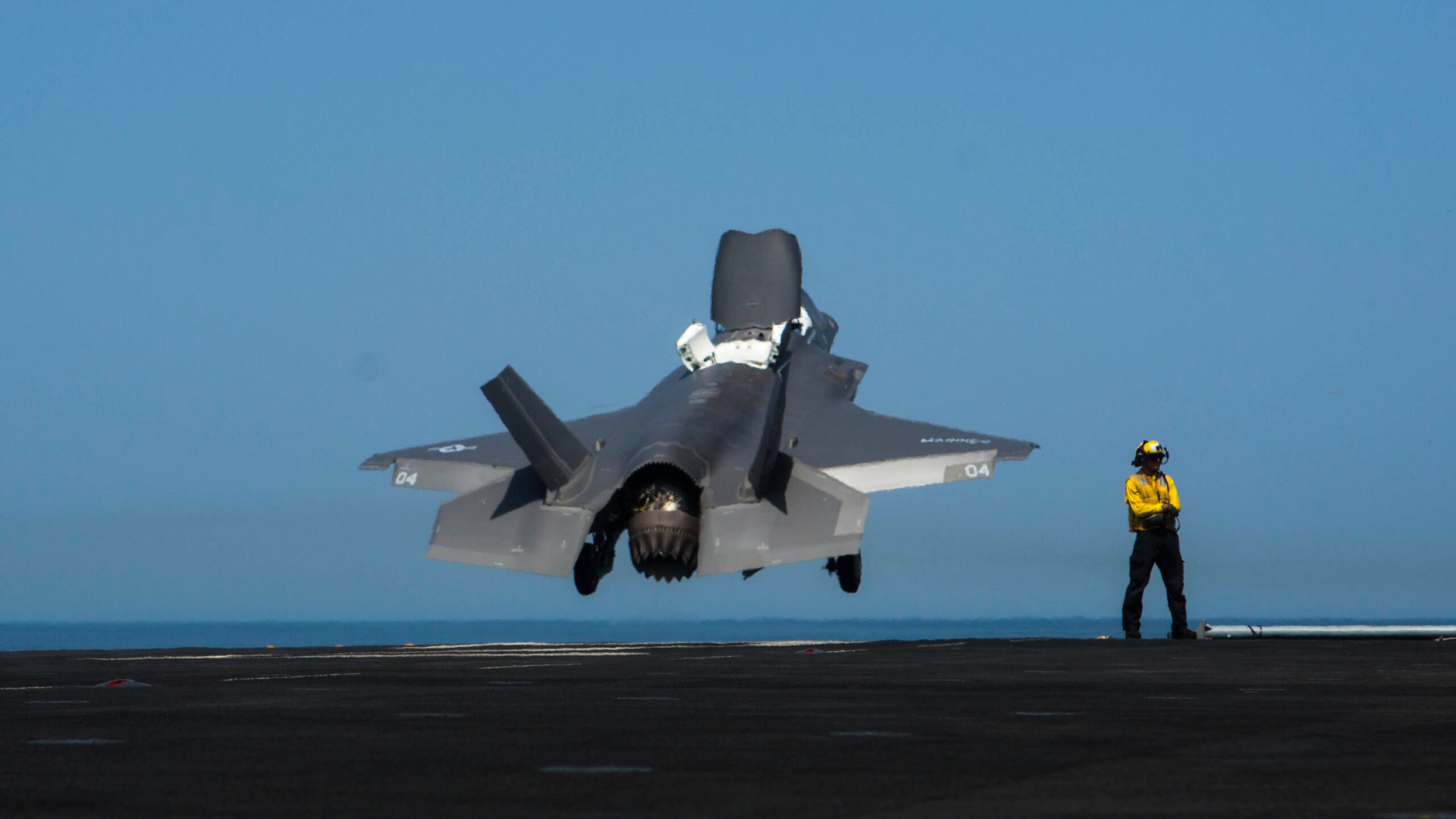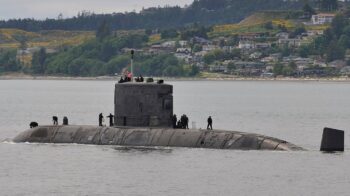
An F-35B assigned to Marine Fighter Attack Squadron 211 launches from the amphibious assault ship Essex (LHD-2). (U.S. Marine Corps photo by Cpl. A. J. Van Fredenberg/Released)
CORRECTION 5/5/2022 at 9:34 a.m. ET: This report has been updated to remove a chart and accompanying text that misidentified information about aircraft production figures.
WASHINGTON: The Marine Corps today published its first aviation plan since 2019, in which it stressed a need to ensure the service’s aviation fleet maintains “digital interoperability” among the Joint Force and foreign partners.
“The future [Marine Air Ground Task Force] is increasingly characterized by its ability to sense, share, and fuse information at tactically relevant speeds with the Joint Force, as well as partners and allies,” reads the document, signed by the service’s top aviator, Lt. Gen. Mark Wise. “Information, and the speed at which it can be shared, is a driving force in the MAGTF’s ability to create tempo in a future operating environment.”
The service’s aviation plan is akin to the Navy’s 30-year shipbuilding plan in that it projects what the Marine Corps envisions the future aviation fleet will look like, what capabilities will be most important and the overall strategic vision laid out by the deputy commandant for aviation. Also similar to the shipbuilding plan, the service has failed to produce the document on a routine basis.
The document’s focus on “digital interoperability,” also referred to as “DI,” echoes the Pentagon’s larger goals for Joint All Domain Command and Control as well as the Navy’s portion of that effort, Project Overmatch.
“The goal of MAGTF DI is to provide the required information to the right participants at the right time, to overcome an adversary, while improving efficiency and effectiveness,” according to the document. “MAGTF DI aims to provide greater situational awareness, accelerate the kill chain, and enhance survivability to outmaneuver and defeat the threat.”
The aviation plan describes the “MAGTF Agile Network Gateway Link,” dubbed MANGL, as the foundation of the service’s efforts to digitally connect its aircraft. The service’s plan uses a “hubs” and “spokes” analogy to describe MANGL.
“Hubs have a comprehensive gateway and spectrum agile radio to handle the message translation and network management of present and future tactical data links (TDL),” according to the document. “Spokes have the same interfaces, but less capable gateways and legacy radios.”
The service anticipates that by fiscal 2024 that every Marine Corps aviation platform will have “a way to transmit and receive multiple standardized links” to meet the service’s missions.






















